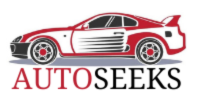Did you know over 26.2 million registered vehicles are navigating its roadways in Canada? That’s a lot of cars. With such a vast number of cars on the road, there are equally numerous insurance policies scattered across the country.
Despite the prevalence of insurance, car insurance myths can stick around. They can confuse you and might even take you in the wrong direction, especially when trying to make the best decisions for your ride.
But here’s some good news: you don’t have to navigate this road of myths alone. We’re here to help you separate fact from fiction.
So, without further ado, let’s get started!
Table of Contents
Myth 1: Insurance is not Mandatory for Safe Drivers.
It’s a common belief that if you’re a safe driver, you don’t need car insurance. However, this couldn’t be further from the truth.
Even if you’re the best driver, car insurance is a must. Like in the rest of Canada, Car insurance for Alberta drivers and across the country is a requirement. And driving without valid insurance can result in severe legal repercussions, such as fines, driver’s license suspension, or even the possibility of impounding your vehicle.
Now, you might think you are very careful on the road! That’s great! Your safe driving habits lower the risk of bumps and scrapes. But insurance isn’t just there for accidents. It’s also there to cover theft, vandalism, and those freak acts of nature like a hailstorm.
Myth 2: Car Insurance Gets Expensive for New Cars
You just bought that new car, and you’re already thinking about your wallet and feeling much lighter. Well, let’s shift gears and understand what’s going on with insurance premiums.
First off, how are insurance premiums calculated? Well, the insurance company considers numerous factors, including your driving history, your location, and the type of your car. Now, when it comes to new cars, the common belief that the insurance cost will be high is not valid. Sure, new cars can be pricier, but there’s more to the story.
They often come with advanced safety features and better security, which can actually lower the risk of accidents and theft. And what does lower risk mean? It can mean lower premiums. So, if your new ride has many safety features, tell your insurance provider. It could save you some bucks.
Myth 3: Insurance Only Covers Accidents Where Insured is Not at Fault
Picture this: You’re behind the wheel, and you end up in a fender bender because it was your fault. Now, you may think that your insurance won’t cover this because it was your fault. But guess what? That’s not always the case.
Car insurance isn’t just a one-size-fits-all. It’s got a whole bag of tricks to help you out, even when the accident is your fault.
First, you’ve got the ‘liability coverage. This part is your legal pass to drive—it covers the other person’s car and medical bills if you’re at fault. But what about your car? That’s where collision coverage comes into play. If you have this in your policy, your insurance company can help cover the costs to repair or replace your ride, even when you’re at fault.
Myth 4: Claim Settlement Procedure is Complex
Sometimes, just the thought of going through a claim settlement process can feel like you’re gearing up for a cross-country road trip. But it doesn’t have to be a bumpy ride! Let’s break down this procedure:
- Report the Incident – As soon as possible, let your insurance company know what happened. You can do this online, on the phone, or even on a mobile app if your insurer has one.
- Documentation is Key – Gather all the info about the incident. This means photos of the damage, a police report if there was one, and any other details about what happened.
- Assessment Time – Your insurance company might send an expert to take a look at your car and figure out the cost of repairs.
- Review and Approval – The adjuster will give their report to the insurance company. If everything checks out, the company will give the green light to start on the repairs.
- Repair and Reimburse – You get your car fixed, and depending on your policy, the company will pay the bills directly to the garage or reimburse you if you’ve paid out of pocket.
So, there you have it! With these simple steps, your claim settlement process can be easy.
Concluding Thoughts
Whether you drive a shiny new model or a beloved old-timer, insurance protects your vehicular companion against the unexpected twists and turns of the road. And with these myths debunked, you can make informed decisions that can save you time, money, and hassle in the long run.
- Keeping Your Gear Organized and Mobile - May 6, 2024
- Understanding Strut Tower Braces for Your Car - May 3, 2024
- Unlocking The Secrets of Your Car’s Identity with a VIN Decoder - April 25, 2024
